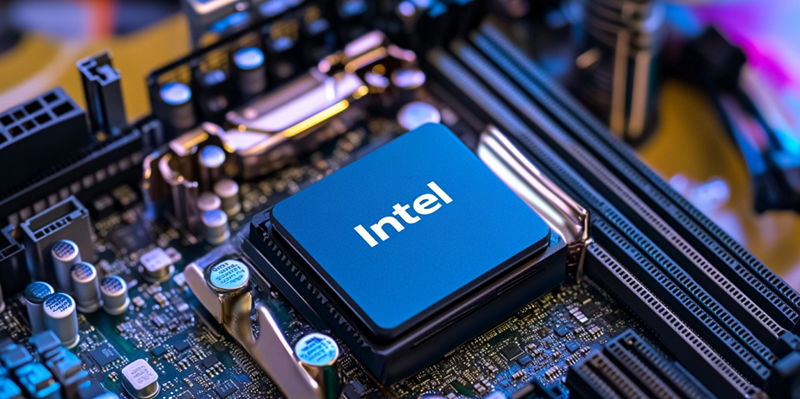As we move closer to October 2024, excitement builds around Intel’s upcoming Arrow Lake “Core Ultra 200” series, with the Core Ultra 5 245K drawing significant attention. This new CPU promises to redefine the mid-range segment, offering a blend of power and efficiency that could set a new standard. But can it truly deliver on these promises? Let’s delve into the specifications, performance benchmarks, and competitive comparisons to find out.
Arrow Lake Core Ultra 5 245K Specifications
The Intel Core Ultra 5 245K brings with it an enticing array of features. Equipped with 6 high-performance “P-Cores” and 8 efficiency-focused “E-Cores,” it totals 14 cores and 14 threads. The P-Cores have a base clock speed of 4.2 GHz, while the E-Cores run at 3.6 GHz. These can boost to 5.2 GHz and 4.6 GHz, respectively, showcasing impressive speeds.
Cache sizes are another highlight, with a massive 24 MB L3 cache paired with a 26 MB L2 cache, culminating in a total cache pool of 50 MB. Such extensive cache provisioning is expected to translate into smoother multitasking and quicker data retrieval. Additionally, the Maximum Turbo Power (MTP) of this CPU ranges from 125W to 159W, indicating a focus on achieving a balance between performance and energy efficiency. This array of specs not only piques interest but also sets the groundwork for understanding why the Core Ultra 5 245K is receiving so much attention ahead of its official release.
Benchmark Performance Insights
Recent leaks from Baidu Forums shed light on the Core Ultra 5 245K’s capabilities, particularly through its Cinebench R23 performance. Scoring 25,495 points in multi-thread performance, this CPU shows a marked improvement over its predecessor, the Core i5-14600K, which scored 24,630 points. Despite a 30% reduction in threads and slightly lower clock speeds, the Core Ultra 5 245K manages a 4% performance enhancement.
Such performance gains are not just confined to raw scores; the efficiency improvements are equally commendable. The Core Ultra 5 245K operates at a lower MTP of 159W compared to the 14600K’s 181W, signaling a noteworthy advancement in energy efficiency. These benchmarks suggest that Intel’s new CPU could be a game-changer for mid-range computing needs. Incorporating superior performance at lower power consumption levels shows that Intel is keen on maximizing computing efficiency, which is crucial for modern users concerned about both energy costs and environmental impact.
Competitive Landscape Analysis
When comparing the Core Ultra 5 245K to its competitors, its prowess becomes even more apparent. It holds its own against AMD’s Ryzen 9 5950X, scoring just shy of its 25,680 points. Additionally, it comes close to the performance levels of Intel’s higher-tier Core i9-12900K, which boasts 27,488 points.
Significantly outpacing processors like the Ryzen 7 9700X by around 23%, the Core Ultra 5 245K establishes itself as a formidable contender in its segment. Priced at an anticipated $350, it offers a compelling mix of performance and efficiency, making it an attractive option for both general computing and gaming enthusiasts. The fact that it rivals CPUs that are traditionally considered high-end while maintaining a mid-range price point adds to its allure and could potentially sway buyers who are price-sensitive but unwilling to compromise on performance.
Industry Trends Toward Efficiency
A prevailing trend in CPU development is the move toward greater power efficiency without compromising performance. The Core Ultra 5 245K epitomizes this shift, showcasing how Intel is embracing this paradigm. The drop in power consumption, paired with continued performance enhancements, indicates a broader industry move toward sustainable computing solutions.
This trend also aligns with a growing consumer demand for energy-efficient technologies. As environmental concerns become more central to purchasing decisions, CPUs like the Core Ultra 5 245K, which offer high performance with reduced energy usage, are likely to resonate well with a broad audience. Intel’s direction with this CPU suggests that the company is listening to market demands and innovating in a way that balances performance needs with sustainability and efficiency goals.
Anticipation for the Arrow Lake Series
As we approach October 2024, excitement and anticipation are growing around Intel’s forthcoming Arrow Lake “Core Ultra 200” series, with the Core Ultra 5 245K in particular grabbing the spotlight. This next-generation CPU aims to revolutionize the mid-range market, promising a powerful yet efficient performance that could potentially set a new benchmark in the industry. The Core Ultra 5 245K is not just another mid-tier processor—it marks Intel’s effort to push the boundaries of what mid-range CPUs can achieve.
Specifically designed to balance power and energy efficiency, this new chip could set a new gold standard for similar products. As consumers and tech enthusiasts, the big question we are all asking is whether it will live up to these high expectations. By examining its detailed specifications, running comprehensive performance benchmarks, and comparing it with competing products, we can gain a clearer picture of what makes the Core Ultra 5 245K so special.

